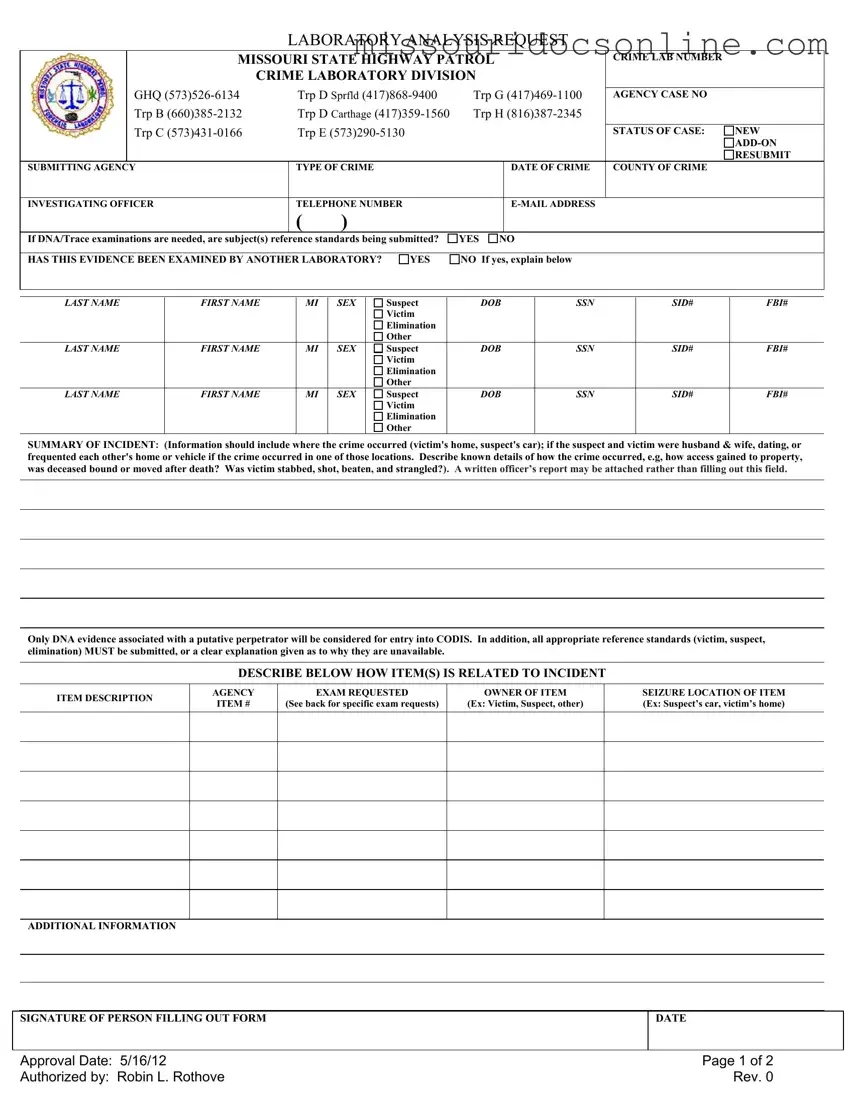Blank Laboratory Analysis Request Missouri Form
The Laboratory Analysis Request Missouri form is a crucial document used by law enforcement to request forensic analysis from the Missouri State Highway Patrol Crime Laboratory. This form facilitates the examination of evidence related to various types of crimes, ensuring that critical information is analyzed efficiently. To initiate the process, fill out the form by clicking the button below.
Access Laboratory Analysis Request Missouri Editor
